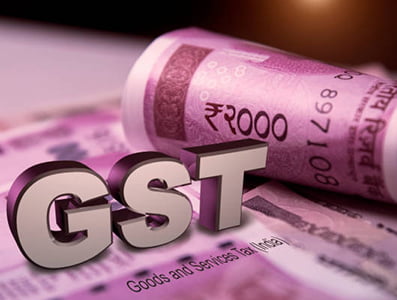
What is the GST (Goods and Services Tax)?
Table of Contents
- 1 What is the GST (Goods and Services Tax)?
- 2 GST system
- 3 Goods and Services Tax in India (GST)
- 4 Which countries are responsible for collecting the goods and services tax (GST)?
- 5 Types of GST
- 6 Know more about SGST, CGST, IGST, and UTGST
- 7 A summary of the Central Goods and Services Tax (CGST)
- 8 What is IGST (Integrated Goods and Services Tax)?
- 9 State Goods and Services Tax (SGST)
- 10 CGST and SGST examples
- 11 IGST example
Most goods and services sold for domestic use are subject to the Goods and Service Tax, a value-added tax. Consumers pay the GST, but it is remitted to the government by businesses selling the products and services.
The GST is an indirect federal sales tax paid on the purchase of particular products and services. The firm adds the GST to the product’s price, and the buyer pays the total amount plus the GST. The GST component is collected by the firm or seller and forwarded to the government. It is also known as value-added tax in some nations (VAT).
Also Read: All You Need To Know About GST Amendment Process
GST system
Most nations that levy GST have a single unified GST system, which means that a single tax rate applies to all goods and services. A country that employs a unified GST platform collects both central and state-level taxes (entertainment tax, entry tax, transfer tax, sin tax, and luxury tax) as a single tax. Almost everything is taxed at the same rate in these countries.
Goods and Services Tax in India (GST)
In 2017, India implemented a dual GST structure, which was the most significant change to the country’s tax structure in decades. The primary goal of implementing the GST was to eliminate tax on tax, or double taxation, which cascades from the manufacture to the consumption levels.
Which countries are responsible for collecting the goods and services tax (GST)?
The GST was first implemented in France in 1954, and more than 160 countries have since adopted it.
Also Read: The Ultimate Guide With GST Search
Types of GST
There are four types of GST: the Integrated Goods and Services Tax (IGST), the State Goods and Services Tax (SGST), the Central Goods and Services Tax (CGST), and the Union Territory Goods and Services Tax (UTGST or UGST). Each of them has a different taxation rate.
| Types of GST | Benefactors | Priority of Tax Credit use | Collectors | Applicable Transactions (Goods and Services) |
| CGST | Central Government | CGST IGST | Central Government | Within a single state, i.e., intrastate |
| SGST | State Government | SGST IGST | State Government | Within a single state, i.e., intrastate |
| IGST | Central Government and State Government | IGST CGST SGST | Central Government | Between two different states or a state and a Union Territory, i.e., interstate |
| UTGST/UGST | Union Territory (UT) Government | UTGST IGST | Union Territory (UT) Government | Within a single Union Territory (UT) |
Also Read: How To Track GST Registration Status
Know more about SGST, CGST, IGST, and UTGST
The Goods and Services Tax (GST) is a single tax with three components: CGST, SGST, and IGST. Under the GST law, the central government will collect CGST, SGST, or IGST depending on whether the transaction is intrastate or interstate.
Intra-state transactions occur when goods or services are supplied within a state, and both the CGST and SGST are collected. When goods or services are provided between states, the transaction is classified as inter-state, and only IGST is collected.
It is important to note that GST is a destination-based tax collected by the state where the goods are consumed rather than the state where the goods are manufactured. There is now only one tax, as opposed to multiple taxations in the past, such as Central Excise, Service Tax, and State VAT.
Also Read: Process For Online Registration For GST
A summary of the Central Goods and Services Tax (CGST)
The Central Goods and Services Tax (CGST) is a tax levied by the central government on intra-state supplies of both goods and services under GST, and the CGST Act governs it. The same intra-state supply will also be subject to SGST, which the state government governs.
This implies that both the Central and state governments will agree to appropriately combine their levies for revenue sharing. On the other hand, section 8 of the GST Act clearly states that taxes must be levied on all intra-state supplies of goods and/or services, but the tax rate cannot exceed 14%.
Also Read: How GST Changed The Face Of SMEs
What is IGST (Integrated Goods and Services Tax)?
The IGST Act will govern the IGST. A tax levied on all inter-state supplies of goods and/or services under GST. IGST will be charged on any goods and/or services imported into or exported from India.
Also Read: The Era Of GST Spells Success For Small And Medium Businesses
State Goods and Services Tax (SGST)
Under GST, SGST is a tax levied by a state government on intra-state supplies of both goods and services, and the SGST Act will govern it. As previously stated, CGST will be imposed on the same intra-state supply but governed by the central government.
CGST and SGST examples
Omar, a businessperson in Maharashtra, sells goods worth Rs. 20,000 to Anand in the same state. 18% GST tax slab applies, including the CGST rate of 9% and the SGST rate of 9%. In such a case, the dealer receives Rs. 3600, of which Rs. 1800 goes to the central government and Rs. 1800 goes to the Maharashtra State Government.
IGST example
Suppose Rajesh, a businessperson from Maharashtra, sold goods worth Rs. 100,000 to Umang in Gujarat. The GST rate is 18%, including the IGST rate of 18%. In this case, the dealer is required to charge Rs. 18,000 as IGST, which will be directed to the centre.
Conclusion The government has created an online portal for GST: www.gst.gov.in, also known as the GST Portal/ GSTN portal. It facilitates various services for taxpayers, including GST registration, filing GST returns, requesting refunds, and cancelling GST registration.
Also Read: Key Points On Understanding The GST Number






